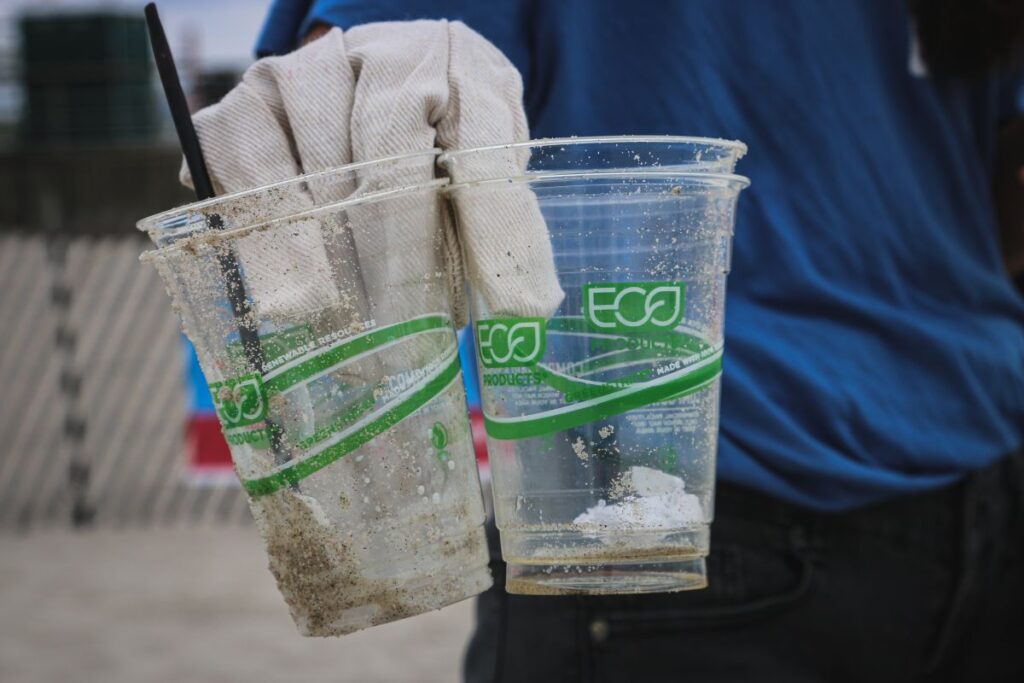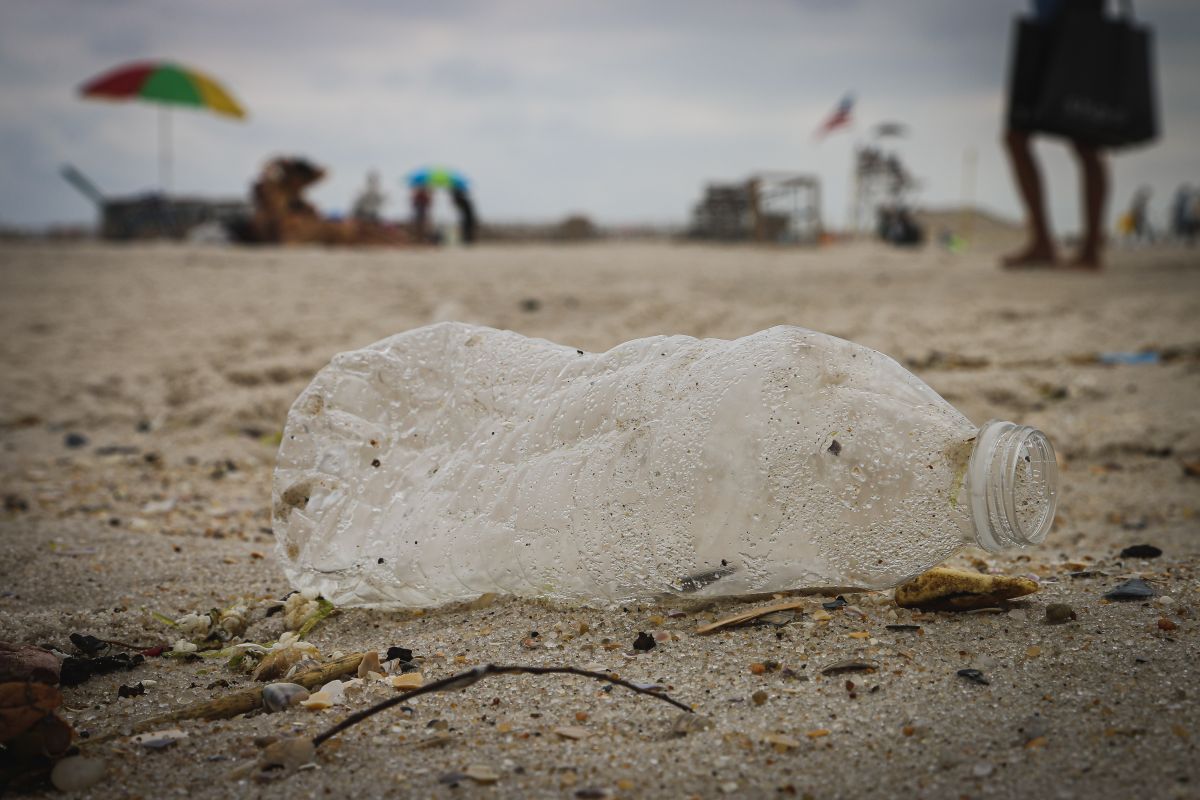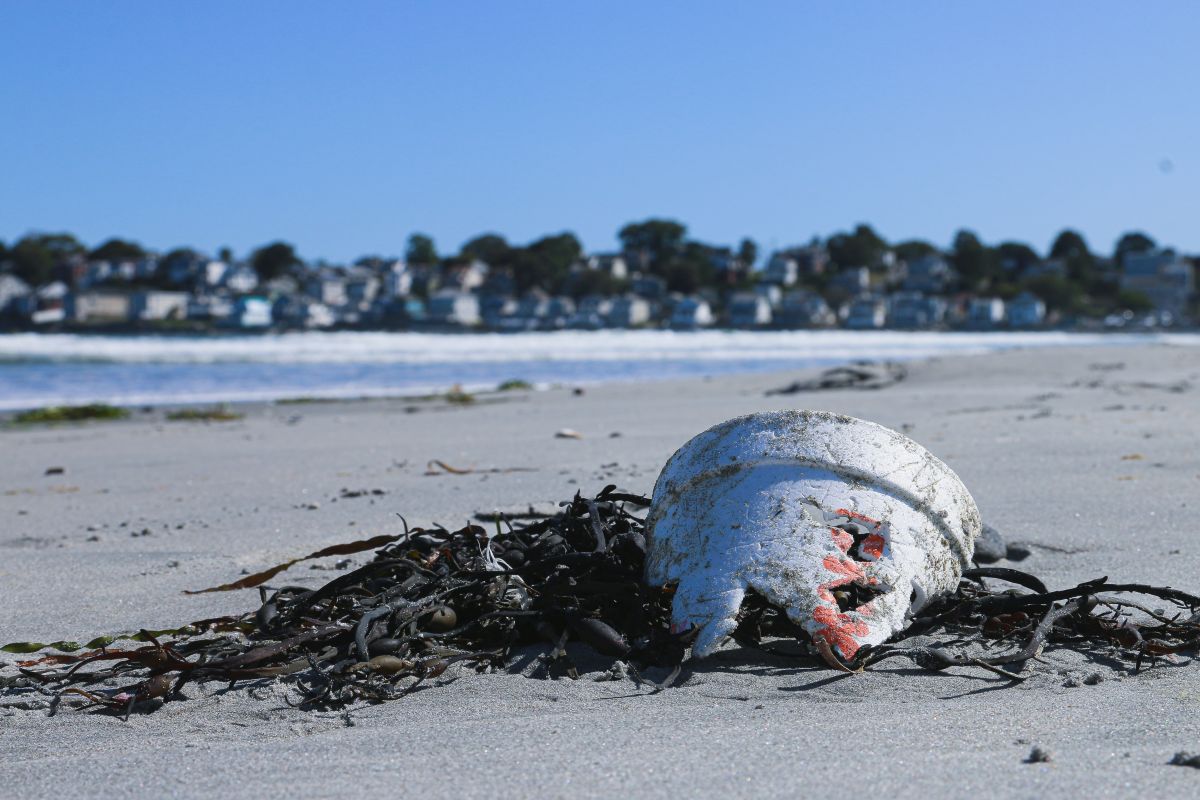Greenwashing refers to the practice of falsely advertising an organisation's green credentials in an effort to increase sales. In light of rising public awareness of the environmental damage caused by numerous businesses, individuals may be motivated to whitewash their bad behaviour. Businesses who put on a "all talk, no action" show will devote more resources to appearing to care about the environment than they would to really doing something to lessen their impact.
Some businesses will use "greenwashing" to hide the environmental damage they cause. The use of this method is commonplace in the fossil fuel business. As an illustration, one of the largest oil corporations in the world, BP, has wisely picked green as its primary branding colour, and its logo, which resembles a flower, was designed by no accident. All of us are smart enough to know that these innocuous references to the outdoors are really a guise for greenwashing.
Fashion is not immune to greenwashing, albeit it may be less visible. As conscientious buyers, we must accept the fact that complicated problems have no easy answers. How then can we recognise the warning signs? Exactly how does one recognise a greenwashing fashion label?
FAQs About Greenwashing
If a company can support their eco-friendly claim with hard data, they have every reason to make it available to consumers. If that information isn't provided, you've probably spotted a case of greenwashing. Unfortunately, hidden trade-offs and unsubstantiated claims are not the only forms of greenwashing.
A toilet paper company sells one product made out of recycled paper. The recycled toilet paper is overpriced but still makes them look good.
Greenwashing is more common than you may think. A 2010 analysis of nearly 5,300 home and family products found that 95 per cent made problematic green claims. With many consumers in search of environmentally friendly products, it's worrying that many claims are exaggerated or completely unsupported.
Greenwashing is bad for the environment because it encourages consumers to buy a product or service, thinking that they are helping the environment, when often, the result is the opposite of what's good for the environment.
Greenwashing exploits consumers' genuine environmental concerns, creating problems such as limiting consumers' ability to make environmentally friendly decisions or generating confusion and scepticism towards all products promoting green credentials, including those that are genuinely more environmentally friendly. Here are some ways you can tell if a brand is greenwashing.
Initiatives That Sound Great To Cut Carbon Emissions At Head Office
Solar panels on the corporate building's roof and a glasshouse in the break room, anyone? That's fantastic, but it won't cut it. Since the supply chain accounts for the bulk of a company's carbon emissions, addressing it should be a high priority. Seventy percent of the environmental impact of the apparel business is attributable to production. Companies need to consider where their products are made, how they are transported, and how their raw materials affect the environment.
The brand's approach to reducing emissions from the supply chain should be detailed in the sustainability report. These reports are used by Good on You to assess a brand's environmental impact and award a score, allowing consumers to easily compare products and determine which companies are making genuine efforts to safeguard the environment.
'Eco-Friendly Packaging,' But Little Else
It's a good sign that a company cares about the environment and is making an effort to reduce waste if they advertise minimal, recycled, or "recyclable" packaging. There's a chance they'll even bring up the fact that they recycle ink cartridges at work. Again, these actions are not sufficient to counteract the environmental damage caused by our current mode of production.
The production stage textile waste and the surplus apparel being generated are the main contributors to the fashion industry's trash. It was widely noted after the premium brand Burberry burned £28m worth of unsold clothing and perfume a few years ago that this was standard procedure for the fashion industry.
Then there are the low-quality fast fashion labels that promote wasteful consumption and an unsustainable business strategy. Every ten minutes, six tonnes (6 000 kg) of garments are abandoned in landfills in Australia. These companies' claims to be "becoming green" as they continue to produce in enormous quantities should set off alarm bells.
It's important to keep an eye out for companies that put the onus of reducing waste on their customers. Making garments that are "timeless" and "reject passing trends" is admirable, but if they are also inexpensive, mass-produced, and of low quality, they are no different from quick fashion that is currently popular.
However, it's a win-win situation for the environment and the consumer if a business can both reduce its textile waste and its packaging.
'Energy Efficiency' Is Simply The Law.
A wide variety of practices constitute "greenwashing" in the fashion business. LED and energy-efficient lighting, as well as sensor lights, are frequently used in retail establishments, but this marketing gimmick can be overstated at times. This sort of illumination is commonplace in most commercial establishments. In fact, several jurisdictions mandate it. To make a big fuss about something that is mandatory for everyone to do is pointless if the firm itself has not adopted anything new to improve their environmental impact.
Hidden Trade-Off
The sin of hidden trade-offs occurs when a company makes an environmental claim about a product, collection, etc. based on a limited number of criteria rather than considering the full scope of its production processes.
Here's an example from the fashion industry: a major label utilises some recycled textiles in its designs and markets them as "eco-friendly," even though the clothing were mass-produced in facilities that rely on fossil fuels and are intended to look dated within a few short months.
Authorities and watchdogs have even probed and cautioned several fast fashion retailers for making false sustainability claims. Because "the information offered regarding sustainability was not sufficient," the Norwegian Customer Authority found H&M's marketing of their Conscious Collection to be "misleading." This is particularly problematic given that the collection is marketed as having environmental benefits. The Telltale Signs: You can learn more about a company's commitment to environmental and social responsibility by visiting they're about page or sustainability page.
Do their offices or production facilities run on eco-friendly energy? Which measures are being taken to cut down on or eliminate waste, water usage, and carbon emissions? Does the company ship with recyclable or biodegradable materials? Do most items in the collection employ environmentally friendly fabrics and dyes, or is this simply a minor part of the process?
Targets And Misleading Claims
Funny thing, targets. Generally speaking, companies can choose any environmental impact goals they like, regardless of whether or not they will actually have any bearing on the company's operations.
Reading the small print can help you figure this out. A 50% reduction in emissions may sound like a tremendous achievement, but it may turn out to be tied to a time when the corporation was much larger, before divisions or factories were sold off. They might easily "halve emissions" without making many changes. Emissions reductions stated as a proportion of production volume fall prey to the same sleight of hand; indeed, 15 percent less energy was used to make that one t-shirt. However, because you're producing so many more t-shirts, your entire carbon footprint has grown.
The gold standard for climate goals is one that is supported by scientific research. A corporation is doing its part if it sets emission reduction objectives that are in line with what experts say is necessary to prevent catastrophic climate change.
'Minimum Wage' Payment
The term "minimum wage" refers to the legally mandated lowest wage an employer can pay their employees and is used in many nations. This is in stark contrast to the 'living wage,' or the minimal amount a garment worker needs to earn to provide for themselves and their families, including food, housing, healthcare, and an education. In Bangladesh, for instance, the vast majority of the garment industry's workers make less than the legal minimum and even less than the poverty line. Companies that make a big deal about making sure their employees get paid the minimum wage are doing the bare minimum and shouldn't be commended for it.
Keep in mind that it is difficult to regulate brands' claims about paying their workers a decent wage and other labour regulations. Workers' rights and health may be compromised in major production facilities in countries other than the brand's home country. Ethical firms should disclose the names and locations of all factories used in the manufacture of their goods to provide full supply chain transparency. Brands that adhere to fair trade principles are even better because they guarantee their employees a decent income and working conditions.
In Huge Companies, Sustainable Ranges
Are you considering returning to a fast fashion retailer because of an advertisement for their new "organics" or "sustainable" range? Don't fall for that! As a promotional strategy, this is being used more frequently by high-volume, fast-fashion brands. Brands who offer this selection of clothing typically only do so as a small part of their entire output; this does not indicate a sudden shift in their business strategy. A company's actual hope is that the positive attention it receives for one green effort will spread across the rest of the business.
Don't think that a small section of a mall can change the fast fashion industry for the better. It's greenwashing unless the company has concrete plans to make all of its products or at least more than half of them ethical.
In addition, consumers may not take seriously brands that only offer one or two options in terms of ethical products. T-shirts made from organic cotton are simple to produce, but what about investigating the wastewater and water use, toxic dyes, and working conditions? Greenness cannot be assumed just because the fabric is made from organic cotton. Keep an eye out for certifications like GOTS that prove the product is environmentally friendly.
Brands Greenwash Using Generic Language
Always do your research on the manufacturer before buying something at a discount. Before whipping out your credit card, you should ask yourself these two questions.
- How much does the firm from whom I am purchasing this item pay the lady who manufactured it?
- What values do I support by making this purchase?
The tone of a company's online copy can also be instructive in revealing hidden information about its business operations.
- Is the brand utilising difficult-to-understand language?
- Does it avoid using specific vocabulary while discussing sustainability?
- Is the brand utilising language to portray itself as ecologically and socially conscious without providing precise statistics and evidence to back this up?
Consider A Brand's Advertising Strategies.
Greenwashing occurs when a company presents itself as environmentally friendly when it is not. This can be done in a number of ways, including the use of vague and general language as well as persuasive advertising. Ask yourself these things while you peruse a brand's online presence and marketing materials to learn more about it:
- Is the brand displaying its sustainability with generic nature photos or stock photographs, or with visuals of its genuine sourcing and manufacturing practises?
- Are there photographs of the women who make their clothing on their website?
Brands Must Practise What They Preach.
A company can say all the right things, but if its actions don't match their words, they have a problem. If you're unsure whether or not a company is actually doing anything, ask yourself the following questions.
- Is it possible to find a company's stance on diversity and workplace culture on their website?
- Can you confirm that they are acting rather than just talking?
- When it comes to global challenges, are they all talking?
Our Job As Conscious Consumers
Greenwashing misleads customers into buying products that are bad for the environment and the workers who manufacture them. People have an innate tendency to accept assertions made about them. We harm the environment and the people who work in the supply chain of the firms making false claims if we buy into their bogus marketing. Just as brands have a responsibility to their customers, so do we. When looking into a new company, it is essential to ask the following questions to determine whether or not they are actually sustainable and produce clothing that is created ethically.
What Can You Do About Greenwashing And Brand Transparency?
The fashion business is one of several sectors that has been plagued by greenwashing, but it doesn't mean we have to support it. When trying to alter the actions of brands, transparency is essential.
Conclusion
Greenwashing refers to exaggerating a company's commitment to environmental sustainability for marketing purposes. Despite growing public knowledge of the corporate environmental impact, some people may try to conceal their poor habits. This strategy is widely used in the fossil fuel industry. Australia has a staggeringly high rate of clothing abandonment; every ten minutes, six tonnes (6 000 lb) are dumped in landfills. Watch out for businesses that place the onus of waste prevention squarely on the shoulders of their clientele.
When a firm makes an environmental claim about a product based on an inadequate set of criteria, they are committing the sin of hidden trade-offs. Whether or not the chosen environmental impact targets have any affect on the company's activities is irrelevant. If a company commits to emission reduction targets consistent with what scientists agree is needed to avoid catastrophic climate change, it is doing its part. So don't believe the hype from quick fashion brands claiming to be environmentally conscious. Unless the corporation actually intends to make all of its products ethical, it's just greenwashing.
Brands with limited ethical product offerings risk being disregarded by consumers. For example, when a firm falsely advertises itself as eco-friendly, it is called "greenwashing." Using vague and generic language in combination with persuasive advertising is one method. Greenwashing misled customers to purchase products that are harmful to the environment and the employees who make them.
Content Summary
- Greenwashing refers to the practice of falsely advertising an organisation's green credentials in an effort to increase sales.
- Some businesses will use "greenwashing" to hide the environmental damage they cause.
- The use of this method is commonplace in the fossil fuel business.
- Since the supply chain accounts for the bulk of a company's carbon emissions, addressing it should be a high priority.
- The brand's approach to reducing emissions from the supply chain should be detailed in the sustainability report.
- The production stage textile waste and the surplus apparel being generated are the main contributors to the fashion industry's trash.
- Then there are the low-quality fast fashion labels that promote wasteful consumption and an unsustainable business strategy.
- Every ten minutes, six tonnes (6 000 kg) of garments are abandoned in landfills in Australia.
- It's important to keep an eye out for companies that put the onus of reducing waste on their customers.
- However, it's a win-win situation for the environment and the consumer if a business can reduce its textile waste and packaging.
- A wide variety of practices constitute "greenwashing" in the fashion business.
- The sin of hidden trade-offs occurs when a company makes an environmental claim about a product, collection, etc.
- The Telltale Signs: You can learn more about a company's commitment to environmental and social responsibility by visiting their about page or sustainability page.
- Generally speaking, companies can choose any environmental impact goals they like, regardless of whether or not they will actually have any bearing on the company's operations.
- The gold standard for climate goals is one that is supported by scientific research.
- A corporation does its part if it sets emission reduction objectives that align with what experts say is necessary to prevent catastrophic climate change.
- Ethical firms should disclose the names and locations of all factories used to manufacture their goods to provide full supply chain transparency.
- As a promotional strategy, this is being used more frequently by high-volume, fast-fashion brands.
- Don't think that a small section of a mall can change the fast fashion industry for the better.
- It's greenwashing unless the company has concrete plans to make all of its products or at least more than half of them ethical.
- In addition, consumers may not take seriously brands that only offer one or two options in terms of ethical products.
- Keep an eye out for certifications like GOTS that prove the product is environmentally friendly.
- Greenwashing occurs when a company presents itself as environmentally friendly when it is not.
- If you need clarification on whether or not a company is actually doing anything, ask yourself the following questions.
- Greenwashing misleads customers into buying products that are bad for the environment and the workers who manufacture them.
- When trying to alter the actions of brands, transparency is essential.























